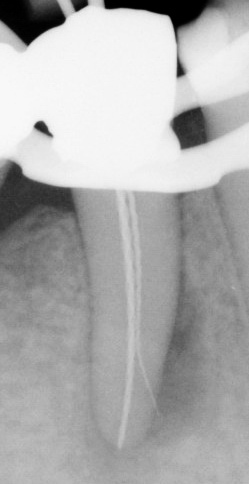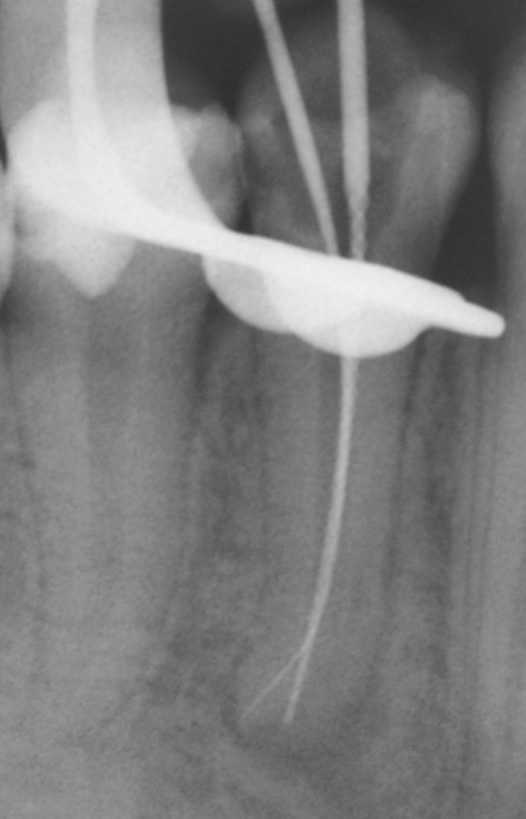Working length radiograph






The working length radiograph is taken at the commencement of instrumentation to determine exactly the correct preparation length. The preoperative radiograph is used for preliminary measurement of the probable length. Use of a multifrequency apex-locator is recommended before the working length radiograph to maximize the accuracy of that film. Instrument sizes #15 - #25 are usually used for working length radiographs. Smaller sizes may be difficult to see in the radiograph, and larger sizes cause more damage if over-instrumentation occurs. In roots with two canals a reamer or a K-file is placed in the buccal canal and a H-file in the lingual canal to facilitate identification of the canals. Rubber dam is partly detached from the frame to allow placement of the film. Endo-ray or corresponding film holders are optimal for working length radiographs with conventional films. CCD-type digital sensors are a good and rapid choice for such films. The new generation sensors give excellent results even with small files. The paralleling technique instead of the bisecting angle technique should be used whenever possible. In multirooted teeth overlapping of roots/canals often occurs, therefore more than one working length film may be required using mesial or distal projection. Small corrections (1-2 mm) can be calculated from the radiograph, but if the need for correction is more than that, a new working length radiograph is usually needed once the estimated adjustments have been made to the files.